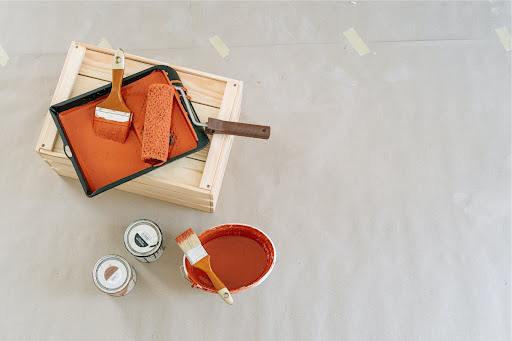Huge profits for flipping homes; how is it done? This is the question that anyone who is starting out with flipping homes for profit like to know. For the last 15 years flipping houses has been on the rise across America even other parts of the world. The second quarter of 2021, the number of house flips reached 80,000. That’s almost 5% of all home sales or one out of every 20 transactions according to ATTOM statistics.
With all of the TV shows about flipping homes has turn a frenzy with people wanted to start flipping and not know anything about it. Yes, it seems like they make good profits and it’s so easy but what they don’t tell you how they started, the disappointments they had and the money they lost doing it. So, here’s the reality going back to the basic on flipping homes for profits.
What Is House Flipping?
It’s when an investor like yourself buys a distress or old house and brings it to value by fixing it and then sells it for a profit. So what is considered a flip property? It must be bought with the intention of quickly reselling. The time between the purchase and the sale often ranges from a couple months up to a year.
There are two different types of house flipping:
- Fix and flip is the general industry reference to the most common form of flipping houses for profit, and specifically the practice of purchasing a house at a low amount, making necessary repairs and/or cosmetic improvements, and then selling the house for a profit, completing the “house flip.” Fix and flip can, at times, be synonymous for house flipping, but there are other forms of house flipping as well, many that often do not entail repair work between the purchase and the “house flip”.
- An investor is purchasing the property due to a disadvantaged circumstance, buying a property from someone below market value means that it is being purchased at a loss for the seller. This could mean that the seller could be desperate to sell the property, because they need money or are in danger of foreclosure, or the property could be purchased at auction after a bank foreclosure or after the government has claimed the land due to delinquent tax payments.
We’re mainly focusing on the first fix-and-flip definition and providing you with tips to help you choose a property, make renovations, and sell the smart way.
Is Flipping a Houses Profitable?
Renovating houses may sound like it’s easy to do, but the reality is it’s not. Flipping houses for profit can go either direction great or not so great. This is why you must learn from others and learn about the mistakes people make when getting involved with house flipping. To truly understand flipping homes is to learn the science behind it, there is the wrong way and then there is the right way.
When done the right way flipping homes for profit can be a rewarding investment and extremely profitable. Here we’ll breakdown the principals and in no time you’ll be making smart decisions with budgeting, assessments, renovations and market values. Once you understand these principals you’ll be ready to sell the flip home for a huge profit.
When searching for flip property pay close attention to the most expensive damage such as foundational issues, electrical problems, plumbing, mold, HVAC replacement and roof damage. These things can be costly and cut majorly into your profits. Most people don’t know how to identify these issues and would need an inspector to assess the property for damage, and that would cost money to have an assessment service done every time you inquire about a potential flip without even purchasing the home. What we recommend learning how to assess these issues before you start your house flipping venture by watching videos or using a search engine to find sites that provide eBooks or tools that may help with identifying damage and what to look for when assessing a house for damage.
It’s important to do an assessment and knowing your financial margins before you purchase a flip home; that’s why next we’ll be getting into what is the 70% rule and how it works.
What Is the 70% Rule?
The 70% rule is when the purchase price of a property should be 70% after-repair value (ARV) are minus from the renovations and repair costs. This keeps your budget in perspective with overspending on repairs and renovations so you get the most return on your investment (ROI).
Here is an example below:
If a home’s ARV (After Repair Value) is $150,000 and it needs $25,000 in repairs, then the 70 percent rule states an investor should pay $80,000 for the home. $150,000 x 70% = 105,000 – $25,000 = $80,000. Buying a house for $80,000 that will be worth $150,000 may seem like an awesome deal, but you have to remember all the costs involved in a fix and flip.
The rule doesn’t always apply to larger homes that require expensive repairs and in areas that homes are much more luxurious. The rule is useless if you do not know the ARV, market value in the area, and competitive home designs. Don’t guess a value on repairs or have a rough estimate, not understanding your ARV will put you in the red and most first time flippers end up making these mistakes.
5 Rules for Flipping a House
Rule # 1 – Know your Finance
Take your time to understand your finance situation because flipping houses can be a risky business especially with no money. Before you purchase your first flip property, you need to consider how you are going to fund the purchase and repairs. Adding debt into the mix only makes things more risky and having cash in hand is always the best option. Fortunately, you have many different funding options to fund your flip, even if you have little to no cash in your bank account.
We will discuss the different loan options you can use to fund your house flipping business, but first and foremost if you’re going to start flipping it will be most beneficial to open an LLC before you start.
LLCs are a simple and inexpensive way to protect your personal assets and save money on taxes. Here are the benefits:
- Protect your personal money, possessions, and house with limited liability protection
- Have more tax benefits and write off options on your profits
- Increase your business credibility for loans, funds, etc.
Real estate is an expensive industry to start a business. According to the top realtor analyst, the median house price in the United States is $254,900, and real estate can be much more in urban markets on the East & West Coasts. Once you factor in other costly expenses such as your closing costs, holding costs & repair costs, you could easily need over $300,000 in capital just to fund one flip project.
Most importantly, doing any kind of “investment” with debt is not a smart investor. Trying to sell a flipped house for more money than you invested in it is already a risk, even with cash. Using debt in the process skyrockets your chance of losing money if there’s a delay in your plans.
For those that don’t have cash in hand there are other options that may be consider but always run your numbers.
Okay let’s explore some finance options and get best recommendation on getting funding:
HELOC (Home Equity Line of Credit)
If you are a homeowner with equity in your property, you could use a Home Equity Line of Credit to ‘tap-in’ to the equity to get a line of credit that can be used to fund your house flipping business. A HELOC is similar to a Home Equity Loan, but instead of you receiving a lump sum of cash, you receive a ‘credit account’ that is secured by your property. With your HELOC you can borrow cash up to the approved credit limit and only pay interest on the amount you borrow.
PELOC (Portfolio Equity Line of Credit)
If you are an investor that has a portfolio of properties you could use the PELOC to ‘tap-in’ to the equity in you real estate portfolio. Similar to a HELOC, a Portfolio Equity Line of Credit allows take out an equity line of credit against your portfolio that you can use to fund additional purchases and your rehab expenses.
Equity crowdfunding
Equity crowdfunding is the online offering of private company securities to group people together for investment. This concept of ‘pooling money’ for real estate has existed for decades, but with new legislation in 2012 and new innovations in real estate, Crowdfunding platforms are becoming a popular option for funding fix-and-flip projects and real estate deals.
Rule # 2 – Do your research and understand the market value in areas
Most house flippers neglect to overlook what may seem small but yet very important; is the value of other homes in the area and the sales of recent homes in the area. Real estate trends are as important to the buyer as well as the seller. Having a good understanding of the market is knowing what you can sell the flip after the repairs are done will give you a clear understanding of your margins are on a financial level. What you don’t want is over budgeting and pay too much for a property that’s not worth the money for that area. Here’s what could happen when you don’t do your research:
- When you purchase a flip home and didn’t realize that other homes in the area have not been renovated and found later that are only selling for 20k more for what you purchase the property, that will only gives a small amount for budgeting and may not be enough to renovate. This happens to a lot of people just starting out, that’s why it’s important to know the market value before you purchase and the sales without renovations.
- Another situation is not accurately identifying the value of the home after the renovations are completed. Putting too much or too little may not fit the homes in the area and that could cut into your return on investment (ROI). Remember, realtors in the area know their market on the area they work in and get their sale commission. Always speak to a realtor who knows the area, most people that flip homes don’t and end up not making enough on their ROI and or losing money after the sale of the property. Your time is money too and should get paid for it.
Rule # 3 – Create a budget plan
It’s important to create a budget plan first before you purchase an investment property. Knowing what you can spend on a flip home and counter in the amount you can spend for renovations is a must before you close any deal. This will give you a better idea on your ROI and using the 70% rule will leave you extra for those hidden repairs. If you don’t have a lot of knowledge in construction it’s sometimes wise to get a contractor to look the property over and get an estimate on ARV (After Repair Value) before you finalize the deal.
When you are under contract and get a home inspection on a flip property many times problems are spotted this is why it’s good to know before hand and get your budget in perspective before you undergo a contract.
Remember the key to flipping successfully is to do it with cash if possible, budget your renovations wisely and work with a realtor that will get you most for your investment.
4. Learn to budget your renovations smartly
Renovation is a big part when it comes to flipping homes and having a great looking house will get you the most for your investment but making sure you keep to the budget is tough. Understanding how to do a renovation assessment is critical when meeting budgets. Like kitchens and bathrooms if you don’t carefully assess you can easily go over your budget. Here’s some tips to start understanding how to renovate a kitchen and or bathroom without breaking your budget.
Hope this help with getting started, you’ll get the idea once you do your first flip and make a profit. Your renovation budgeting will become easy and you’ll start assessing flips with precision. It’s just takes the first to actually understand how it all works but always remember to counter those unexpected issues because if it was that easy everyone would be doing it.
- Let’s say you’re renovating a house that you hope to sell for $240,000, you bought the house for $160,000 and would like to make $40,000 from the sale. If you do the math and minus $10,000 with the realtors commission you’re looking at around $30,000 for renovations. To stay on target here’s what you can do, consider a smarter renovation that focuses on refinishing the existing cabinets, adding granite counters from a second cut or lessor grade and replacing appliances with surplus brand new but old models. You’ll spend less and have a much higher likelihood of earning back your costs when you resell the house.
- You might invest in a couple big updates on a flip, don’t underestimate the power of small tweaks. Things like a fresh coat of paint, updated hardware such as faucets, shower heads, cabinet knobs, etc. and new landscaping that would make a very nice appeal when buyers first see the house.
- Buy bargain or sale products, you may have to do a bit shopping but it will pay off when you need bulk. Such as if you have two bathrooms and need to tile the floors and showers; here’s a tip; bigger tiles cover more square feet and require less time to install and less grout.
5. Find a realtor and build a relationship
We can’t stress this enough, finding a realtor and building a business relationship is absolutely the most important thing you can do when getting into flipping homes.
A real estate agent who knows the market and the areas they work in will save you thousands, time and get you the most money for your flip once it’s ready to go back on the market for sale. Your agent can use their knowledge to get the most competitive pricing for your flipped home so that you get top dollar.
Think about, it’s the real estate agents job; they work with so many others selling and buying homes for people and see a ton of homes to know what is selling and what is not. Finding the right agent can help you make a smart investment and build your financial power to purchase more flips. Realtors make money when they sell your flip and so do you getting top market value; its win win either way you look at it.
If you’re ready to start flipping houses, make sure you find a realtor you can trust and build that relationship. If you can’t find a realtor there are other options like investor groups that you can partner with and most of them will work with you but may charge a higher percentage rate especially on any funding that investor groups contribute.
Conclusion
You may take this information and work it to your advantage as previous people like yourself who started flipping and if you follow these basic rules it will be a lucrative investment. I have heard people say they did not have the foundational information when they started it would have save them thousands of dollars if they knew the basics on flipping houses for profit. Always, remember if you’re going to get into something it’s wise to do your research, learn as much as you can beforehand and have a clear understanding. I hope this information will bring you great success as it did with many of my friends.





